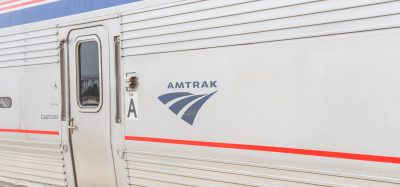The Great British Railways Transition Team launch call for evidence to increase rail freight
Posted: 6 July 2022 | Elliot Robinson (Editorial Assistant - Global Railway Review) | No comments yet
GBRTT launched a call for evidence to get views from businesses on increasing rail freight to help meet ambitious net zero targets.
The Great British Railways Transition Team (GBRTT) has launched a call for evidence to get views from businesses on how to increase the amount of freight that is moved by rail. This growth would decarbonise the nation’s logistics chains and get lorries off roads. GBRTT want the views and ideas from the widest possible range of stakeholders within and beyond the rail and logistics sectors on how to expand rail freight.
It is estimated rail freight currently accounts for just 10 per cent of surface freight but delivers social and economic benefits worth £2.5 billion to the UK each year. More than 60 per cent of these benefits are realised in former industrial heartlands. Rail freight trains generate about 76 per cent less carbon emissions compared to HGVs per tonne of goods transported.
A freight growth target will act as a catalyst for investment in the rail freight sector by setting a clear government ambition for growth. It will help to highlight the role of freight on the rail network, giving confidence to the sector’s customers and investors. In doing so it will help meet the country’s ambitious greenhouse gas reduction targets and reduce the number of lorries on the road.
If rail freight volumes treble by 2050, as modelling indicates could be required to meet the net-zero targets, then there would be about 14 million fewer road lorry movements a year than today.
Related news you enjoy:
Great British Railways Transition Team publish call for evidence report
Great British Railways Transition Team starts plans for rail transformation
“Freight trains have a key role to play in a decarbonised logistics system, and there’s scope for the railway to do even more,” Helen McAllister, Programme Director (Freight Reform) at GBRTT, said. “Research suggests we could need to treble the amount of freight carried by rail to help meet net zero commitments. This would also cut road congestion for drivers and boost the economy. This call for evidence will help us understand how much of the current and future market demand for freight could be met by rail, how we can make it even more efficient and sustainable and how we can connect to new customers.”
“When passenger numbers dropped as a result of the COVID-19 pandemic, focus across the rail industry shifted to rail freight,” Kate Jennings, Policy Director at Logistics UK said. “But now, with passenger numbers returning, our sector will require support and investment to respond to customer demand. Logistics UK welcomes the Government’s commitment to establishing a rail freight growth target and is urging its members to respond to this Call for Evidence to ensure the resulting plans for the future of rail freight are clear and ambitious.”
The call for evidence will help GBRTT to understand the realistic volume of goods that could be transferred to rail; where the potential for future rail freight traffic exists and where new rail terminals could be needed. This builds on the Department for Transport and Industry’s joint Future of Freight long-term plan. The plan highlighted the role rail freight and mode shift plays in enabling an efficient, resilient, reliable, and sustainable freight and logistics sector. Both documents recognise and promote the need for rail to be part of an integrated, multimodal logistics system. The call for evidence is a pivotal next step in achieving our mode shift ambitions. The call for evidence launches on 5 July 2022 and will be open until 27 September 2022.
Stay Connected with Global Railway Review — Subscribe for Free!
Get exclusive access to the latest rail industry insights from Global Railway Review — all tailored to your interests.
✅ Expert-Led Webinars – Gain insights from global industry leaders
✅ Weekly News & Reports – Rail project updates, thought leadership, and exclusive interviews
✅ Partner Innovations – Discover cutting-edge rail technologies
✅ Print/Digital Magazine – Enjoy two in-depth issues per year, packed with expert content
Choose the updates that matter most to you. Sign up now to stay informed, inspired, and connected — all for free!
Thank you for being part of our community. Let’s keep shaping the future of rail together!
Related topics
Cargo, Freight & Heavy-Haul, Passenger Experience/Satisfaction, Sustainability/Decarbonisation
Related organisations
Department for Transport (DfT), Great British Railways Transition Team (GBRTT), Logistics UK







